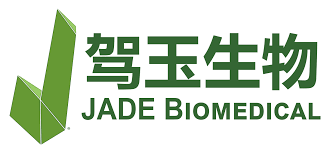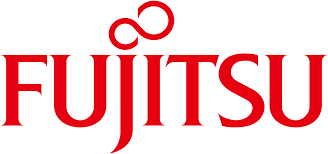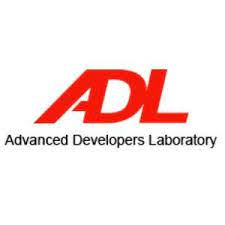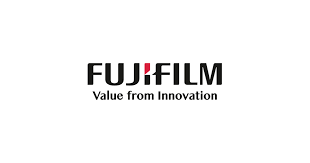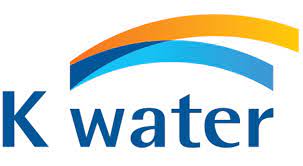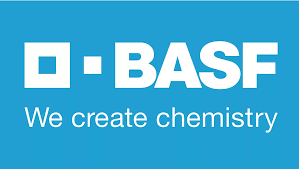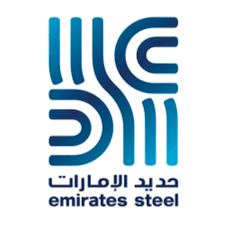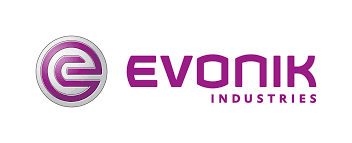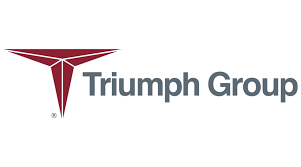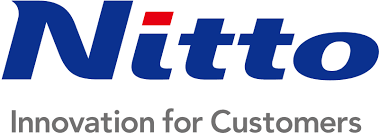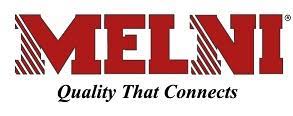Global Green Packaging Market Size, Share & Trends Analysis Report, By Type (Recycled Content Packaging, Reusable Packaging, Degradable Packaging) By Application (Food & Beverages, Consumer Products, Shipping, Chemicals, Others) By Region (North America, Europe, APAC, and Others), and Segment Forecasts, 2024-2032
- Report Summary
- Table of Contents
- Segmentation
- Methodology
- Download Sample
Global Green Packaging Market was valued at US $ 267.83 billion in 2023 and is expected to reach US $ 385.34 billion by 2032 growing at a CAGR of 5.3% during the forecast period 2024 – 2032.
It is expected that the market will gradually recover as we move into many years further after the pandemic. No country has faced unprecedented global disaster as much as the COVID-19 pandemic; this has led to the drastic drop in demand for eco-friendly packaging across all areas of the world. Our analysis indicated that global market saw a drop of 0.61% in the year 2020.
Packaging can be sustainable or “green” which leads to less degradation of the environment and lower power consumption. The green packaging material is made of recyclable materials that are biodegradable and in comparison, with products such as Styrofoam and plastic. Furthermore, it reduces energy consumption and carbon footprint through using recycles in green packaging.
Compared with conventional synthetic packaging, the lower carbon footprint of green packaging helps towards the sustainable environmental and social development for tomorrow. Secondly, green packaging involves means of reducing the quantity and the resulting waste and pollution that are produced in the process of manufacture. One of the major forces that have an impact on the market is increased awareness of sustainability and eco-friendly practices. There is an increased demand due to enhanced pressure for environmental sustainability requirements set both by the government as well as the industry’s shift towards utilization of renewable resources for manufacture.
The Green Packaging Trend Analysis
One important trend is the increasing demand for paper packaging.
Rather than use bio-plastics, paper is cited a number of times as an alternative packaging solution like in paper cups and bags. Statistically speaking, though, paper packaging consumes a far greater amount of volume in doing what plastic does. So, it appears that the paper’s total environmental impact encompasses not only carbon footprints but also overall environmental impact. There seems to be a shift in consumer preference as most prefer paper-based alternatives for the environmental concerns in the use of plastic in packaging applications. Government agencies and industries should ensure they have strict regulatory mechanisms that protect the ecosystem as well support recycling paper-based alternatives.
On the other hand, unlike metals or polymers that form paper packaging, this material is relatively easy to recycle and reuse. Due to such advantages, therefore, paper packaging is considered the cheapest and environment-friendly packaging material. Again, given the capacity of paper and corrugated board recycling plants, they are likely to need enlargement due to the expected amount of recyclable waste. Even today, paper made out of recycled papers hardly leaves any substantial dent in the environment.
Market growth will be boosted by rising demand for eco-friendly food packaging.
These include recyclable papers and polymers, plant-based biomaterials, organic fabric, reusable products, etc., which are among the green components of packaging. The products are eco-friendly, easy to use, and readily available alternatives to normal plastics that create less environmental pollution.
Food technology became an enabler that pushed customers towards using convenience foods because it provided fast service of products, such as processed food products. The increased mobility of people in the country as a result of transportation has also been complemented by additional forms of technologies such as communication. Therefore, it is expected that this will boost the expansion of the global green packaging market during the forecast period. In most cases, many packaging manufacturers embrace their consumers’ interests in sustainability and safety of products.
In turn, consumers’ demand of greener food packaging will drive growth in consumer preference for convenience foods by manufactures of consumer-packaged goods. The benefits associated with green packaging are many. They include reduction in dependence on fossil fuel, the use of renewable energy production system, minimizing resource consumption and more importantly increased usage of the already available recyclable items. Of late, Edible packaging materials have come into play as an alternative since they reduce wastage as well lowering the carbon footprint. Moreover, it creates economic gains both for consumers and manufacturers.
As of 2018, the European Union placed stringent limitations on current packages and packaging waste directives. All plastic packaging by 2030 should be recyclable, with at least 55% recovery rate. About 30 percent of the whole plastic packaging are recouped.
Segmentation Analysis of the Green Packaging Market
By Type Analysis
The recycled content segment will soon dominate the market.
The market is segmented according to type into three categories: post-consumer waste packaging, such as reusable packaging, degradable packaging, and packaging made from recycled materials.
Recycled based packaging took over the market, while reusable one remained behind. Improvements in recycled content packaging could be stimulated by enhanced collection operations and processing capacities and increased usage of recycled content packaging by companies aiming at product differentiation and demonstrating their environmental friendliness. There are several undertakings which are being funded by different players including packaging companies, brand owners, industry associations among others in promoting sustainability programs aimed at increasing the different packaging material’s recycling rates.
The term “recycled plastic packaging” entails many types of plastic containers used for secure transportation and marketing of products within the supply chain system. These comprise of pallets, bins, reservoirs, IBC, RPC, totes and trays, and dunnage container.
However, the widespread use of home delivery in conjunction with e-commerce suggests domestic possibilities that are viable when it comes to cost-effective distribution.
By Application Analysis
Portable and easily manufactured will dominate the sector of food and beverage.
Green packaging is estimated as 80% of which comes from the food and beverage sector alone. # The convenience foods dominate the food and beverage packing outlets because of its portable nature and long shelf life as well as easier manufacture. Some of these convenience food items are frozen foods, munchies, finger foods and drinkable products. They normally come preheated in single-serving hot boxes and require very little preparation. The growing consumption of convenience foods has been ignited by the elderly and the busy lives people lead nowadays.
Consumers prioritize convenience foods that possess the following qualities: they include nutritional values, ease of packaging, attractiveness of the product, and safety. High level packaging and technological development has made it possible for food suppliers and consumers to access ready-to-use food stuffs such as packaged, chilled and refrigerated product lines. Most packaging producers concentrate on issues related to environment protection and security. There is increased food packaging and this has led to consumer’s shifting their interest for convenience-based products.
More and more chemical suppliers are embracing sustainability by reducing the use of plastic packaging. One of the reasons for the change in the transition is partly because of increasing customers’ awareness about the importance of sustainability.
Meanwhile, manufacturers and FMCG companies are making a lot of pledges for packaging sustainability and reviewing their packaging frameworks at the same time as regulators are also taking similar actions.
Regional Analysis of the Green Packaging Market
Due to its portability and convenience of production, Food & Beverages sector will lead.
Food and beverages comprise the highest percentage of the global green packaging market. Portable nature, long shelf-life period, simple manufacture makes convenience foods dominate in food and beverage packaging market. Some of the convenience food items are: frozen foods, munchies, finger foods and beverages. Usually, the foodstuff comes in individually hot ready-filled packs and little cooking is needed. The growing geriatrics’ demands coupled with chaotic lifestyles of contemporary consumers have led to a heightened demand for convenience foods.
Consumers prioritize convenience foods that possess the following qualities: convenience in nutrition, ease of handling, attraction, security and aesthetics on the outer cover. In markets today one can find a wide range of food items that are readily available as a result of sophisticated packaging and technology such as pre-packaged, refrigerated, chilled foods e.t.c. Most packaging manufacturers are focused on sustainability and product safety. This is leading the increase in consumer-packaged good companies and also increasing the likes of people for convenience foods.
Various chemical suppliers are also moving towards environmental sustainability by reducing plastic packaging. Increased customer awareness of the importance of sustainability contributes only part to the transition. Packaging manufacturers and FMCG’s are promoting bold sustainability commitments as well as revamp their packaging strategies.
It is expected that Asia-Pacific will continue as the leader for the whole period of forecast, leading the world in green packaging industry. The Asia-pacific market was worth USD 99.46 billion in 2020. The high concentration of people in cities also leads to overconsumption of convenience foods, sweetened drinks and snacks. Also to note is the fact that this increase of focus on environment conservation by green packaging makers in China, India, Japan, and south Korea is as a result of high concern for greener surroundings by customers. this will further act as another catalyst to spur up the regional market. These commodities include bamboos and rattan among others which can be found in large quantities within South-east Asia. Furthermore, the market is also expected to be positively motivated.
In North America, rigid packaging regulatory regimes are expected to promote green and sustainable packaging resulting into significant growth in the market. In his case, EPA created a sustainable material management program in 2017 to promote and inculcation of SMM policies and practices in order to be adopted.
The European region is often the largest of these markets. The increasing need for economical and environmentally friendly as well as recyclable packaging material is accelerating a local market. The regional market will also be propelled by increasing research and development activities by various European firms like Tetrapak and Mondi plc among others whose works support the uptake of bioplastics.
It is expected that Latin America will witness considerable growth during the forecast period. The increase in food and beverage consumption per capital like Caribbean; Brazil and, Argentina will boost this market.
The Middle East and Africa will enjoy moderate growth under changing economic situations. Increased sales potential for canned products because of longer shelf life and convenience makes packaging more ecological. Also, the existence of many local regional companies that provide a wide variety of canned goods is expected to increase the consumer demand for packaging items.
Top Key Players Covered
- Amcor Limited (Zürich, Switzerland)
- Ardagh Group SA (Dublin, Ireland)
- Ball Corporation (Broomfield, Colorado, United States)
- Braskem SA (São Paulo, State of São Paulo, Brazil)
- Caraustar Industries Incorporated (Austell, GA, United States)
- Cargill Incorporated (Wayzata, Minnesota, United States)
- Cascades Incorporated (Kingsey Falls, Canada)
- Other Key Players
Key Industry Developments in the Green Packaging Market
- Amcor launched a green packaging solution for chocolate in South America this june. Powders chocolates packaging from recycled plastic corporation is charged with designing and manufacturing. The new packaging emitted 53% less carbon than the previous packaging system.
- In April 2021, Amcor launched a packaged health care packaging solution. The recently launched as part of its range of recyclable healthcare packaging products include AmSky blister system.
- In April 2021, Amcor signed a partnership with Nestle for sustainable packaging solution. Through its R&D, Amcor has supported in helping Nestle move the brand in to sustainable paper packaging in Australia.
| Report Components | Details |
|---|---|
| Base Year | 2023 |
| Forecast Period | 2024-2032 |
| Quantitative Units | Revenue in US $ |
| Drivers | Increasing Demand for Sustainable Food Packaging to Propel Market Growth |
| Segments Covered | By Type: Recycled Content Packaging, Reusable Packaging, Degradable Packaging By Application: Food & Beverages, Consumer Products, Shipping, Chemicals, Others |
| Countries Covered | U.S. and Canada in North America, Germany, France, U.K., Netherlands, Switzerland, Belgium, Russia, Italy, Spain, Turkey, Rest of Europe in Europe, China, Japan, India, South Korea, Singapore, Malaysia, Australia, Thailand, Indonesia, Philippines, Rest of Asia-Pacific (APAC) in the APAC, Others include Saudi Arabia, U.A.E, South Africa, Egypt, Israel, Rest of Middle East and Africa (MEA), Brazil, Argentina, Mexico, and Rest of South America as part of South America |
| Market Players Covered | Amcor Limited (Zürich, Switzerland), Ardagh Group SA (Dublin, Ireland), Ball Corporation (Broomfield, Colorado, United States), Braskem SA (São Paulo, State of São Paulo, Brazil), Caraustar Industries Incorporated (Austell, GA, United States), Cargill Incorporated (Wayzata, Minnesota, United States), Cascades Incorporated (Kingsey Falls, Canada), Other |
Table of Contents
- Introduction Of Global Green Packaging Market
- Overview of the Market
- Scope of Report
- Assumptions
- Executive Summary
- Research Methodology
- Data Mining
- Validation
- Primary Interviews
- List of Data Sources
- Global Green Packaging Market Outlook
- Overview
- Market Dynamics
- Drivers
- Restraints
- Opportunities
- Porters Five Force Model
- Bargaining Power of Suppliers
- Threat of New Entrants
- Threat of Substitutes
- Competitive Rivalry
- Bargaining Power among Buyers
- Value Chain Analysis
- Global Green Packaging Market, By Type
- Overview
- Recycled Content Packaging
- Reusable Packaging
- Degradable Packaging
- Global Green Packaging Market, By Application
- Overview
- Food & Beverages
- Consumer Products
- Shipping
- Chemicals
- Others
- Overview
- Global Green Packaging Market By Region
- North America
- U.S.
- Canada
- Europe
- Germany
- U.K.
- France
- Rest of Europe
- Asia Pacific
- China
- Japan
- India
- South Korea
- Singapore
- Malaysia
- Australia
- Thailand
- Indonesia
- Philippines
- Rest of Asia Pacific
- Others
- Saudi Arabia
- U.A.E.
- South Africa
- Egypt
- Israel
- Rest of Middle East and Africa (MEA)
- Brazil
- Argentina
- Mexico
- Rest of South America
- North America
- Company Profiles
- Amcor Limited (Zürich, Switzerland)
- Company Overview
- Key Executives
- Operating Business Segments
- Product Portfolio
- Financial Performance (As per availability)
- Key News
- Ardagh Group SA (Dublin, Ireland)
- Company Overview
- Key Executives
- Operating Business Segments
- Product Portfolio
- Financial Performance (As per availability)
- Key News
- Ball Corporation (Broomfield, Colorado, United States)
- Company Overview
- Key Executives
- Operating Business Segments
- Product Portfolio
- Financial Performance (As per availability)
- Key News
- Braskem SA (São Paulo, State of São Paulo, Brazil)
- Company Overview
- Key Executives
- Operating Business Segments
- Product Portfolio
- Financial Performance (As per availability)
- Key News
- Caraustar Industries Incorporated (Austell, GA, United States)
- Company Overview
- Key Executives
- Operating Business Segments
- Product Portfolio
- Financial Performance (As per availability)
- Key News
- Cargill Incorporated (Wayzata, Minnesota, United States)
- Company Overview
- Key Executives
- Operating Business Segments
- Product Portfolio
- Financial Performance (As per availability)
- Key News
- Cascades Incorporated (Kingsey Falls, Canada)
- Other
- Company Overview
- Key Executives
- Operating Business Segments
- Product Portfolio
- Financial Performance (As per availability)
- Key News
- Amcor Limited (Zürich, Switzerland)
Global Green Packaging Market Segmentation
Green Packaging by Type: Market Size & Forecast 2024-2032
- Recycled Content Packaging
- Reusable Packaging
- Degradable Packaging
Green Packaging by Application: Market Size & Forecast 2024-2032
- Food & Beverages
- Consumer Products
- Shipping
- Chemicals
- Others
Green Packaging by Geography: Market Size & Forecast 2024-2032
- North America (USA, Canada, Mexico)
- Europe (Germany, UK, France, Russia, Italy, Rest of Europe)
- Asia-Pacific (China, Japan, South Korea, India, Southeast Asia, Rest of Asia-Pacific)
- South America (Brazil, Argentina, Columbia, Rest of South America)
- Middle East and Africa (Saudi Arabia, UAE, Egypt, Nigeria, South Africa, Rest of MEA)
Major Players:
- Amcor Limited (Zürich, Switzerland)
- Ardagh Group SA (Dublin, Ireland)
- Ball Corporation (Broomfield, Colorado, United States)
- Braskem SA (São Paulo, State of São Paulo, Brazil)
- Caraustar Industries Incorporated (Austell, GA, United States)
- Cargill Incorporated (Wayzata, Minnesota, United States)
- Cascades Incorporated (Kingsey Falls, Canada)
- Other


